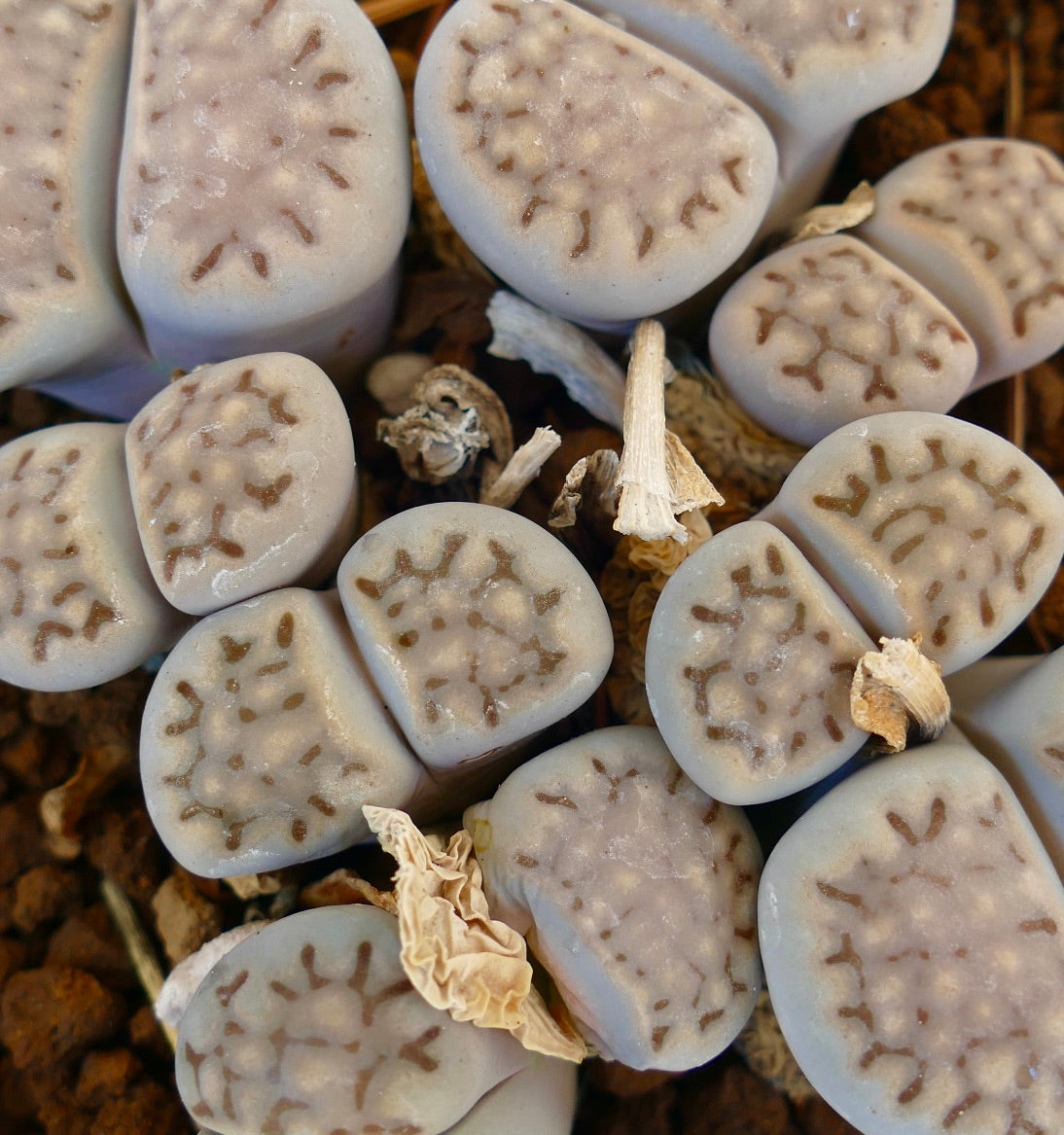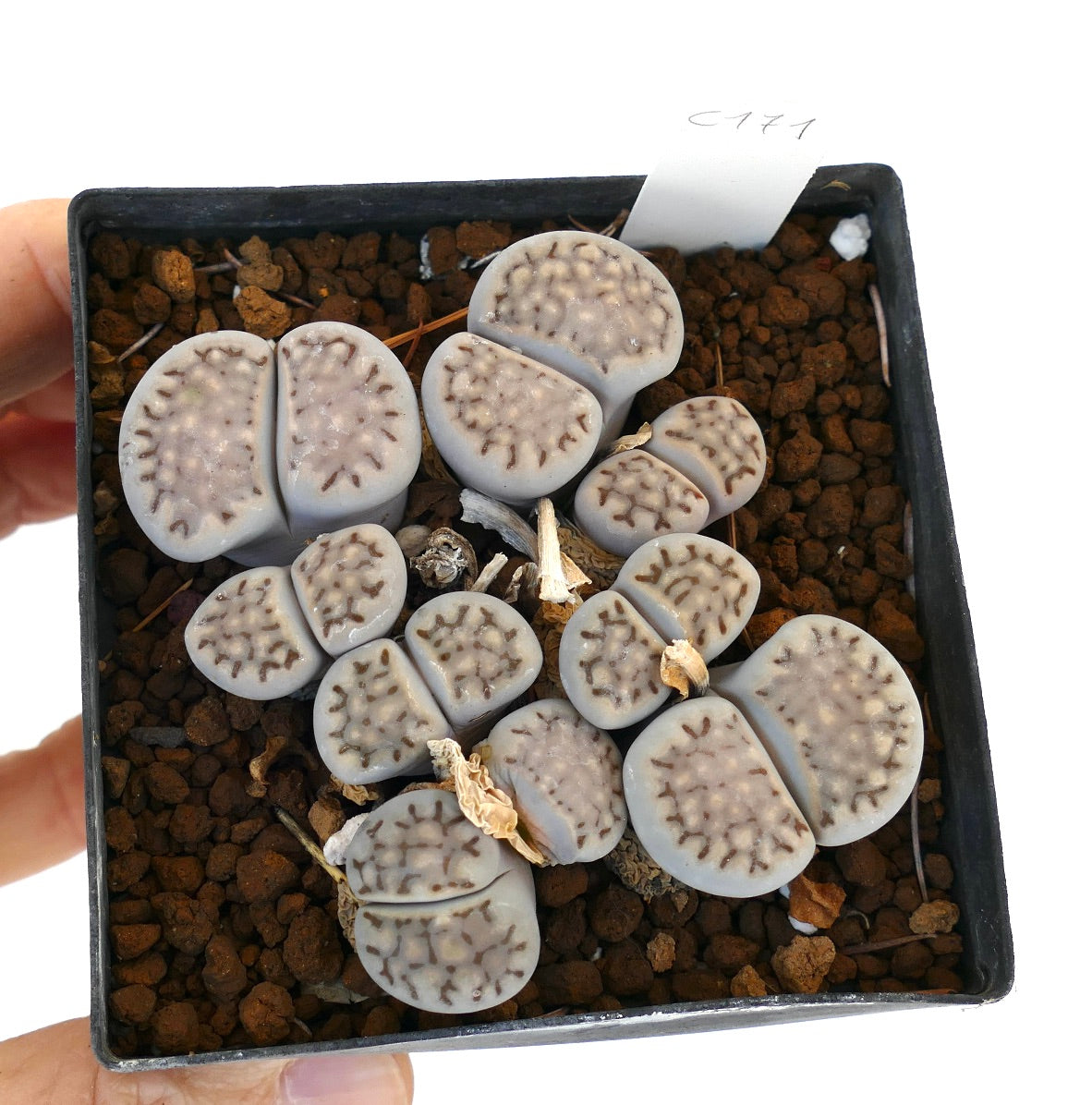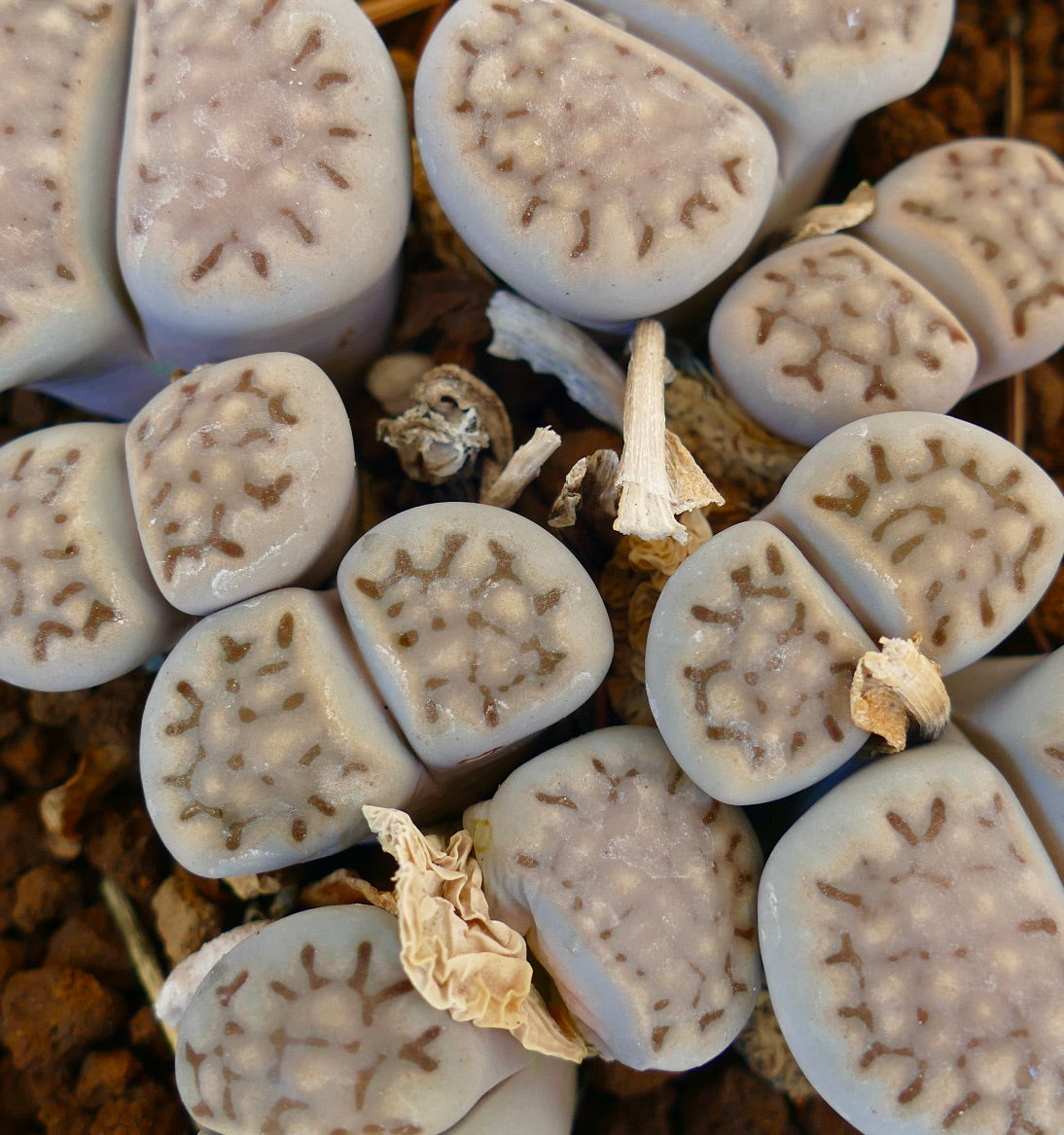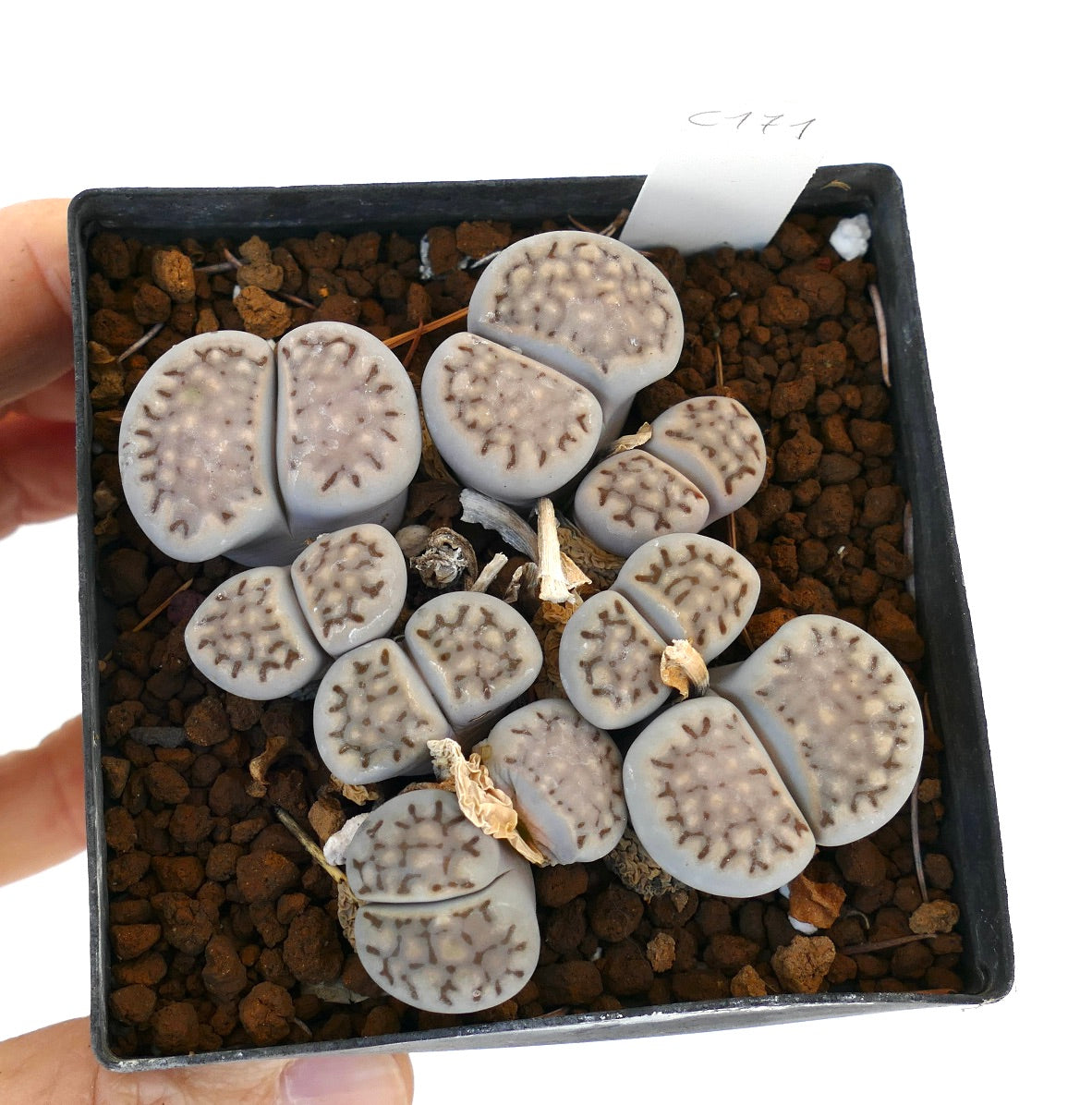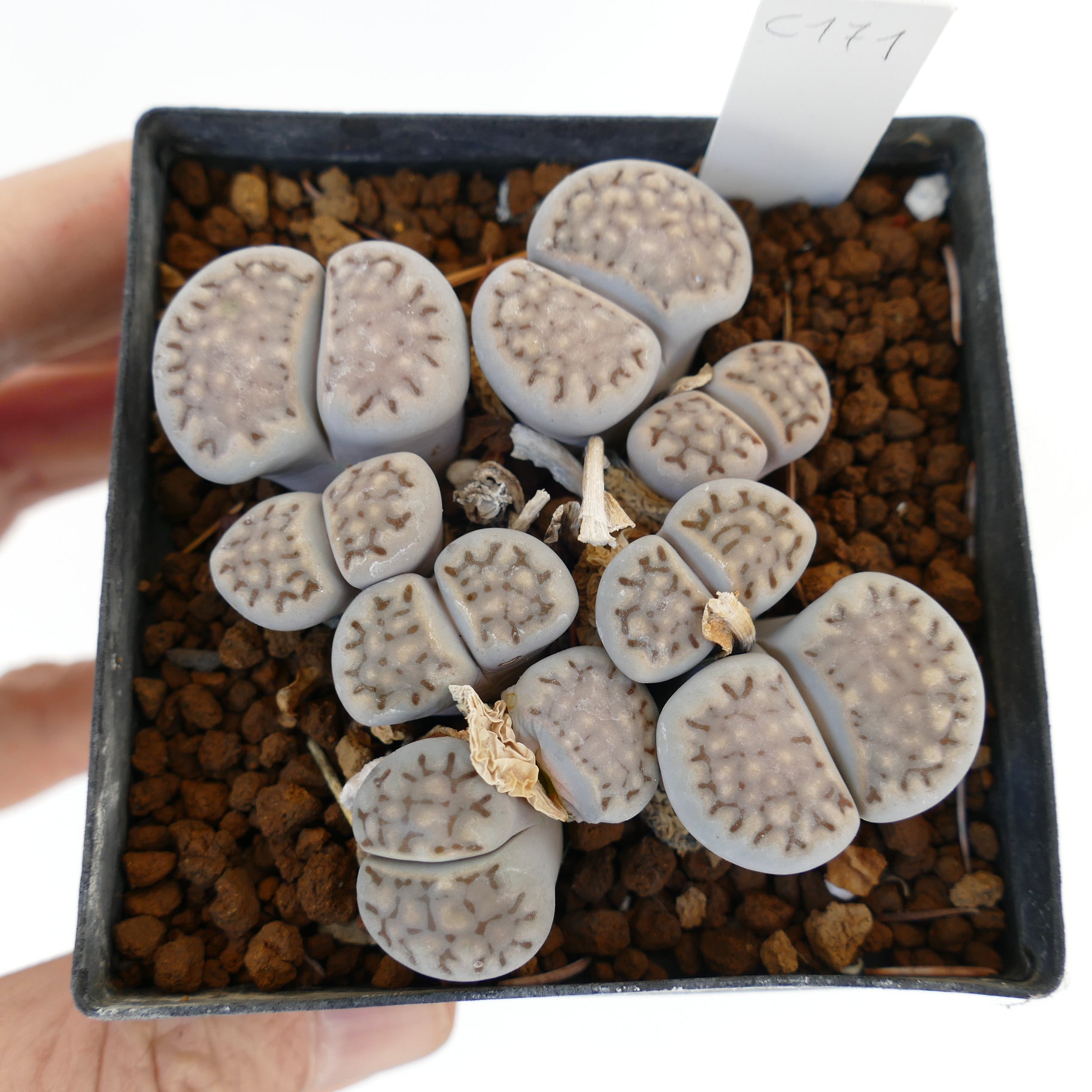- Sigle Speciem
Lithops julii ssp. fulleri v. fulleri C171 (60 km W of Upington, South Africa)
Lithops julii ssp. fulleri v. fulleri C171 (60 km W of Upington, South Africa)
Impossibile caricare la disponibilità di ritiro
Product Description
Lithops julii ssp. fulleri v. fulleri C 171 è una specifica variante di Lithops julii, una specie di pianta succulenta nativa dell'Africa meridionale. Ecco una descrizione di questa variazione:
-
Aspetto: Come tutte le specie di Lithops, Lithops julii ssp. fulleri v. fulleri C 171 ha un aspetto distintivo che assomiglia a piccole pietre o ciottoli. Ogni singola pianta è composta da una coppia di strutture fogliari carnose che sono fuse insieme alla base, formando una fessura tra di esse. Questa fessura ospita il fiore della pianta, che emerge durante la stagione della fioritura.
-
Colorazione: La colorazione di Lithops julii ssp. fulleri v. fulleri C 171 può variare, ma tipicamente presenta tonalità di verde, grigio, marrone e talvolta tonalità rossastre. I colori spesso imitano il terreno circostante o le rocce, fornendo mimetismo contro i predatori e le dure condizioni ambientali.
-
Dimensioni: Generalmente, Lithops julii ssp. fulleri v. fulleri C 171 rimane di piccole dimensioni, con piante individuali che di solito raggiungono circa 2-3 centimetri di diametro.
-
Habitat: Questa variazione di Lithops julii si trova nella provincia del Northern Cape, in Sudafrica, approssimativamente a 60 chilometri a ovest di Upington. Il suo habitat naturale probabilmente consiste in regioni aride e rocciose con terreno ben drenante.
Botanical family: Aizoaceae
Botanical genus: Lithops
Botanical species: julii ssp. fulleri v. fulleri C171
Cultivation
Cultivation
Info and Disclaimers
Info and Disclaimers
Plant Height:
Plant Diameter:
Pot Size:
Grafted/Not Grafted:
Picture take on:
